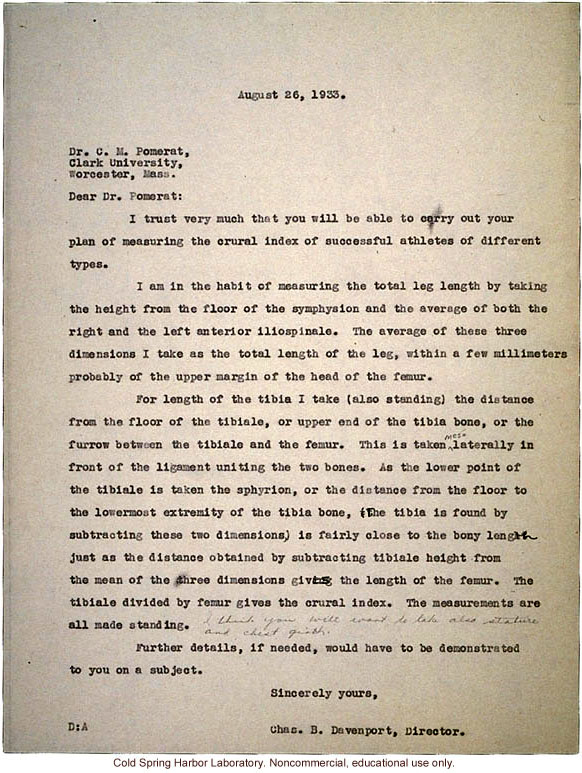August 26, 1933.
Dr. C. M. Pomerat,
Clark University,
Worcester, Mass.
Dear Dr. Pomerat:
I trust very much that you will be able to carry out your plan of measuring the crural index of successful athletes of different types.
I am in the habit of measuring the total leg length by taking the height from the floor of the symphysion and the average of both the right and left anterior iliospinale. The average of these three dimensions I take as the total length of the leg, within a few millimeters probably of the upper margin of the head of the femur.
For length of tibia I take (also standing) the distance from the floor of the tibiale, or upper end of the tibia bone, or the furrow between the tibiale and the femur. This is taken mesolaterally in front of the ligament uniting the two bones. As the lower point of the tibiale is taken the sphyrion, or the distance from the floor to the lowermost extremity of the tibia bone, (the tibia is found by subtracting these two dimensions) is fairly close to the bony length just as the distance obtained by subtracting tibiale height from the mean of the three dimensions giving the length of the femur. The tibiale divided by femur gives the crural index. The measurements are all made standing. [handwritten]I think you will want to take also stature and chest girth.[end handwritten]
Further details, if needed, would have to be demonstrated to you on a subject.
Sincerely yours,
Chas. B. Davenport, Director.
D:A
[end]


